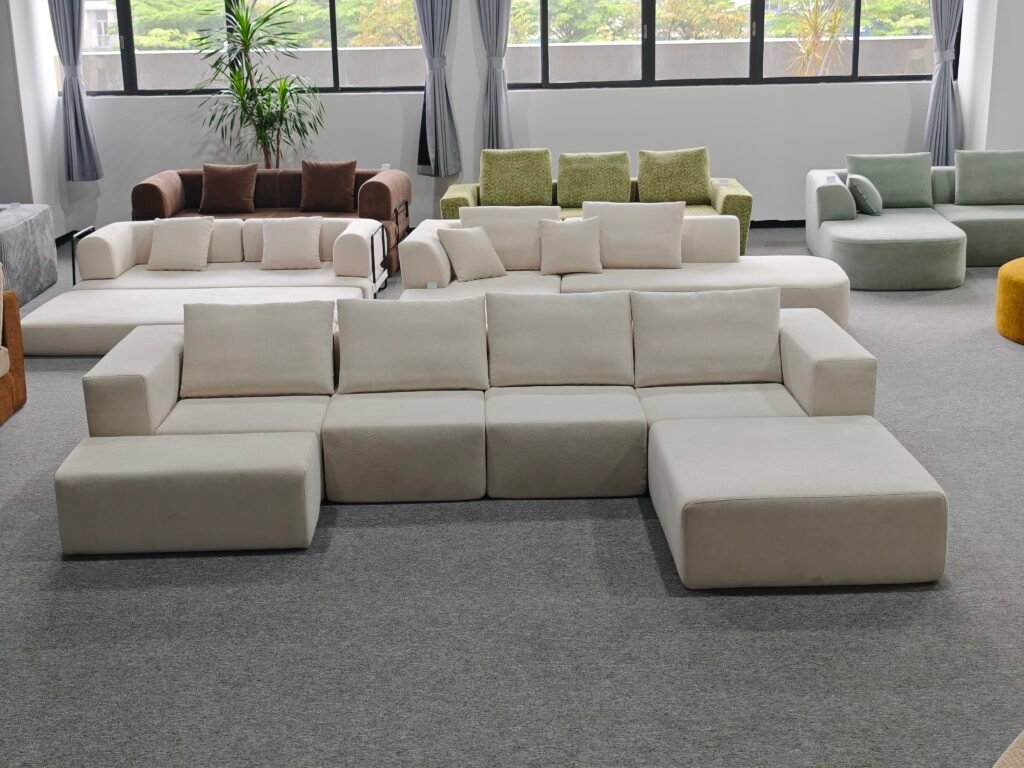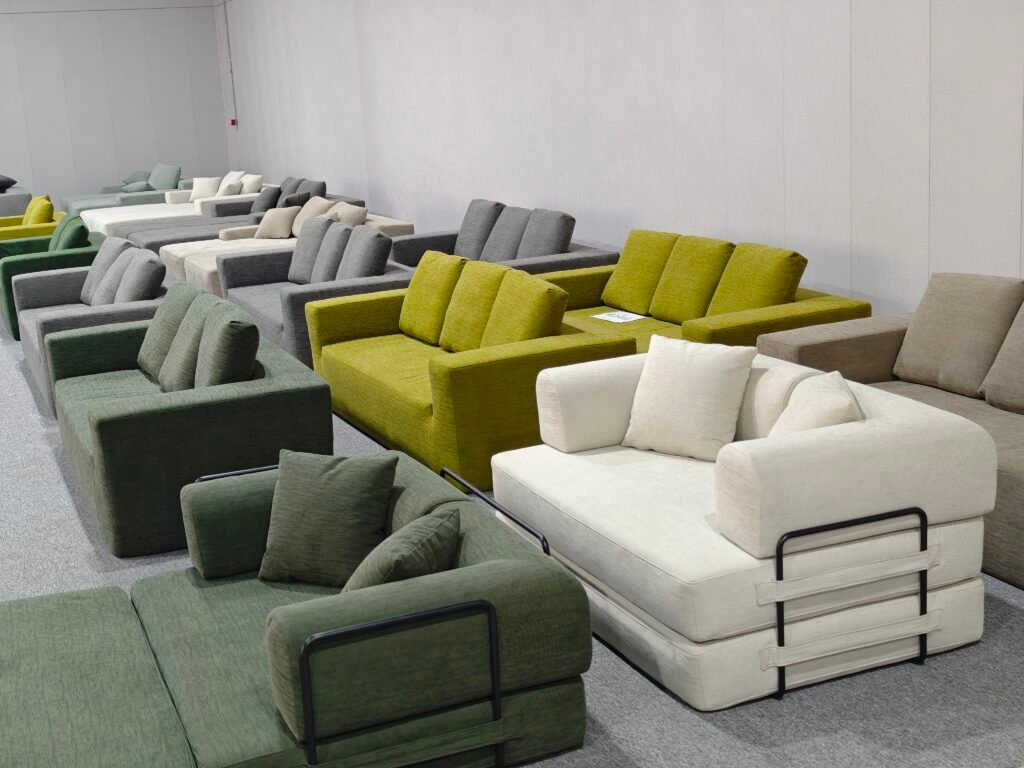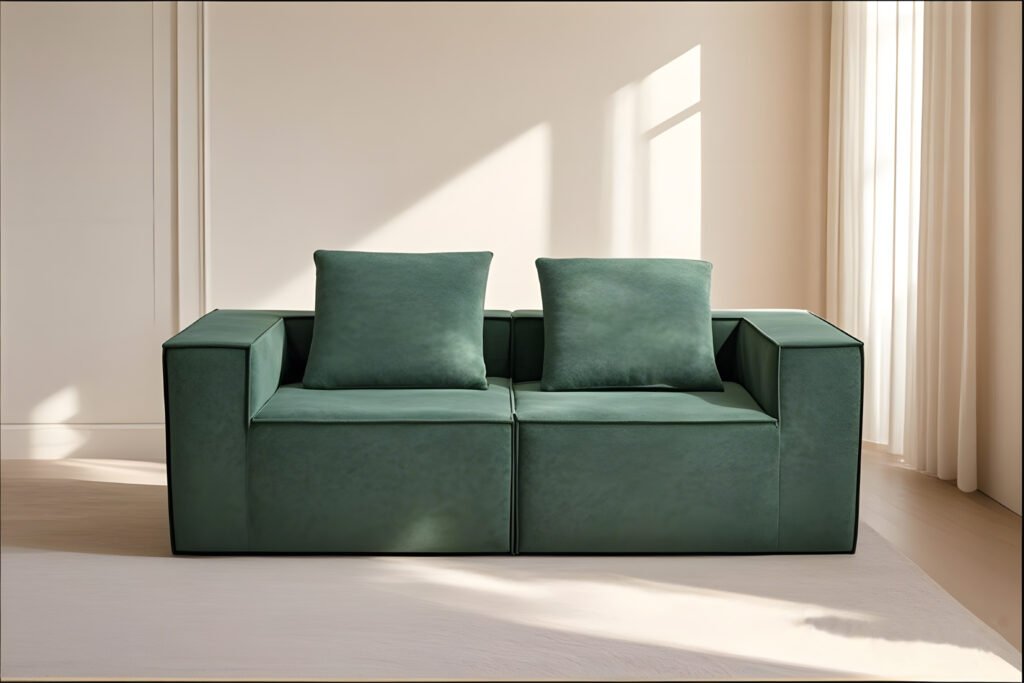As the furniture industry rapidly evolves, packaging innovation is emerging as the next frontier for competitive advantage—especially in the sofa manufacturing sector. Among the transformative trends driving this evolution, compressed sofa packaging technology stands out for its potential to revolutionize the way sofas are produced, shipped, stored, and delivered. For a leading compressed sofa factory like Modular Sofas (modular-sofas.com), this innovation aligns with growing market demands on sustainability, cost reduction, and enhanced user experience.
This article explores the future of furniture packaging with a focus on compressed sofa technology and discusses whether compression is poised to become the new industry standard. We analyze current trends, technological advances, sustainability drivers, logistical benefits, consumer preferences, and regulatory influences shaping packaging innovation in 2025 and beyond.


- Introduction: The Packaging Challenge in Furniture
- Compressed Sofa Technology: A Transformative Approach
- Market Trends Driving Packaging Innovation
- Sustainability: The Imperative for Change
- Consumer Expectations and E-commerce Growth
- Logistics and Warehousing Efficiency Gains
- Technological Integration and Smart Packaging
- Regulatory Environment and Extended Producer Responsibility
- Comparative Analysis Table: Compress Packaging vs Traditional Packaging
- Challenges and Solutions for Compress Packaging Adoption
- Case Study: Modular Sofas’ Leadership as a Compressed Sofa Factory
- Future Outlook: Will Compress Packaging Become the Standard?
- Conclusion
1. Introduction: The Packaging Challenge in Furniture
Furniture packaging has traditionally involved bulky crates, large boxes with excessive padding, and significant material waste. This conventional approach creates multiple challenges:
- High transportation costs due to volume and weight
- Inefficient warehouse space utilization
- Excessive use of packaging materials with environmental repercussions
- Difficulty in last-mile delivery in urban or dense living environments
The rise of e-commerce and consumer demand for sustainable, convenient products have put increased pressure on manufacturers and exporters to innovate packaging methods.
2. Compressed Sofa Technology: A Transformative Approach
Compressed packaging technology revolutionizes furniture logistics by drastically reducing the volume of items through vacuum compression or folding techniques. Specifically for sofas, high-resilience foam and modular designs enable products to be compressed and sealed into compact bundles without damaging the structure or comfort.
Key benefits include:
- Up to 70-80% reduction in packing volume
- Enhanced protection during shipping
- Simplified handling and easier delivery to consumers
- Support for agile production and “sell-first, produce-later” inventory models
Modular Sofas exemplifies this approach by integrating compression technology with modular furniture designs, ensuring market-ready products that meet global shipping requirements efficiently.
3. Market Trends Driving Packaging Innovation
Recent industry analyses show several strong pressures impacting packaging design:
- Increasing adoption of minimalist and functional packaging
- Demand for multi-use or reusable packaging solutions
- Growing incorporation of biodegradable and recyclable materials
- Consumer preference for pleasant unboxing experiences combined with sustainability
- Rise of localized and agile supply chains to reduce carbon footprint
Modular Sofas keeps pace with these trends by offering compressed sofa packaging solutions that balance minimalist aesthetics, protection, and sustainability .
4. Sustainability: The Imperative for Change
Sustainability is no longer optional but a decisive market factor. Several drivers propel packaging sustainability to the forefront:
- Regulatory mandates targeting plastic reduction and waste management (Extended Producer Responsibility or EPR)
- Consumer willingness to pay more for environmentally responsible products (over 50% according to recent surveys)
- Advances in materials such as bio-based plastics, recycled foam, and paper-based packs
- Reduction of carbon footprint via compact packing that lowers freight emissions
Furniture packaging benefits greatly from compression technology, given its ability to minimize wasted space and materials, directly contributing to reduced environmental impacts .


5. Consumer Expectations and E-commerce Growth
The rapid growth of online furniture sales necessitates packaging that ensures product safety yet enables easy transportation and unpacking:
- Secure yet lightweight packaging that resists damage
- Easy-to-haul boxes suited for urban logistics challenges
- Packaging design that offers intuitive, enjoyable unboxing experiences
- Clear recycling instructions and sustainable brand messaging
Compressed sofa packaging meets these consumer needs and supports efficient e-commerce supply chains, making it highly relevant in 2025 and beyond .
6. Logistics and Warehousing Efficiency Gains
From a logistics perspective, compressed packaging offers dramatic benefits:
| Aspect | Compress Packaging | Traditional Packaging |
|---|---|---|
| Volume Reduction | Up to 70-80% reduction | No volume reduction |
| Containers per Shipment | Increased significantly | Limited by bulky cartons |
| Warehouse Space Utilization | Much higher due to compact packs | Large spaces needed |
| Handling & Delivery | Easier, can be single-person handled | Requires multiple handlers |
| Damage Risk | Reduced due to secure sealing | Higher due to large boxes |
These efficiencies translate to lower freight costs, faster turnaround, and reduced carbon footprint, all critical in today’s supply chain considerations .
7. Technological Integration and Smart Packaging
Emerging technologies further empower compress packaging:
- Use of augmented reality (AR) to enhance unboxing experience
- Smart labels with tracking and freshness indicators
- AI-driven packaging design optimizing minimal material use
- Enhanced protective materials like honeycomb and edge protectors in compressed packs
Modular Sofas is beginning to explore these integrations, positioning as a tech-forward compressed sofa factory.
8. Regulatory Environment and Extended Producer Responsibility
Packaging regulations globally are funneling towards reducing waste and incentivizing circularity:
- EPR regulations require manufacturers to take more responsibility for product end-of-life
- Increased taxes on plastics encourage transition to paper-based or biodegradable packaging
- Stricter standards on recyclability and labeling push innovation
Compressed packaging aligns well with these regulations due to reduced material usage and higher recyclability potential .
9. Comparative Analysis Table: Compress Packaging vs Traditional Packaging
| Feature | Compressed Sofa Packaging | Traditional Sofa Packaging |
|---|---|---|
| Packaging Volume | 70-80% smaller | Bulky, large crates |
| Protective Quality | High – vacuum sealed packs protect foam | Dependent on packing materials |
| Sustainability | High – uses less material, recyclable | Lower – often uses non-recyclable plastics |
| Shipping Cost | Significantly reduced | High due to volume and weight |
| Handling Ease | Easy to handle and store | Difficult, requires multiple movers |
| Consumer Experience | Appealing unboxing, compact and portable | Bulky, less convenient |
| Supply Chain Flexibility | Supports just-in-time & “sell-first” models | Rigid due to storage needs |
10. Challenges and Solutions for Compress Packaging Adoption
- Material Durability: Ensuring compression does not harm foam or upholstery requires R&D in foam density and fabric resilience.
- Initial Capital Investment: Vacuum machines and machinery involved need upfront capital but amortize over volume.
- Consumer Education: Customers must understand how to unpack and allow foam to recover properly.
- Scaling Modular Designs: Designing sofas to be easily compressible demands close coordination between designers and engineers.
By addressing these through innovation and education, companies like Modular Sofas are setting standards for success.


11. Case Study: Modular Sofas’ Leadership as a Compressed Sofa Factory
At modular-sofas.com, the company has:
- Designed modular sofas specifically for compression with premium, resilient foam
- Reduced packaging size by over 75% vs traditional shipping
- Implemented eco-friendly materials and recyclable packaging films
- Enhanced user experience with clear instructions and support
- Streamlined shipping, lowering logistics costs and carbon footprint
This comprehensive approach has made Modular Sofas a premier compressed sofa factory and a model for the future .
12. Future Outlook: Will Compress Packaging Become the Standard?
Given the overwhelming benefits and alignment with market demands:
- Industry adoption will accelerate, particularly in urban-focused and e-commerce channels.
- Environmental legislation and consumer values will pressure traditional packaging to evolve or be replaced.
- Advances in materials science and digital printing will enhance compress packaging usability and branding.
- Localized and agile supply chain models will benefit from compact, standardized compressed packaging.
All signs indicate that compressed packaging is poised to become the new standard in furniture packaging within the next 5 years.
13. Conclusion
The furniture packaging landscape is on the cusp of a paradigm shift. Compressed sofa packaging, championed by leaders like Modular Sofas as a compressed sofa factory, offers superior sustainability, cost savings, logistics efficiency, and consumer appeal. It harmonizes with broader 2025 packaging trends emphasizing minimalism, eco-friendliness, and technological integration.
As manufacturers and brands prepare for a future where packaging is not just protection but a competitive asset, compression technology stands out as the innovation defining furniture packaging’s next generation.
For more information on compressed sofa solutions and packaging innovations, visit modular-sofas.com.